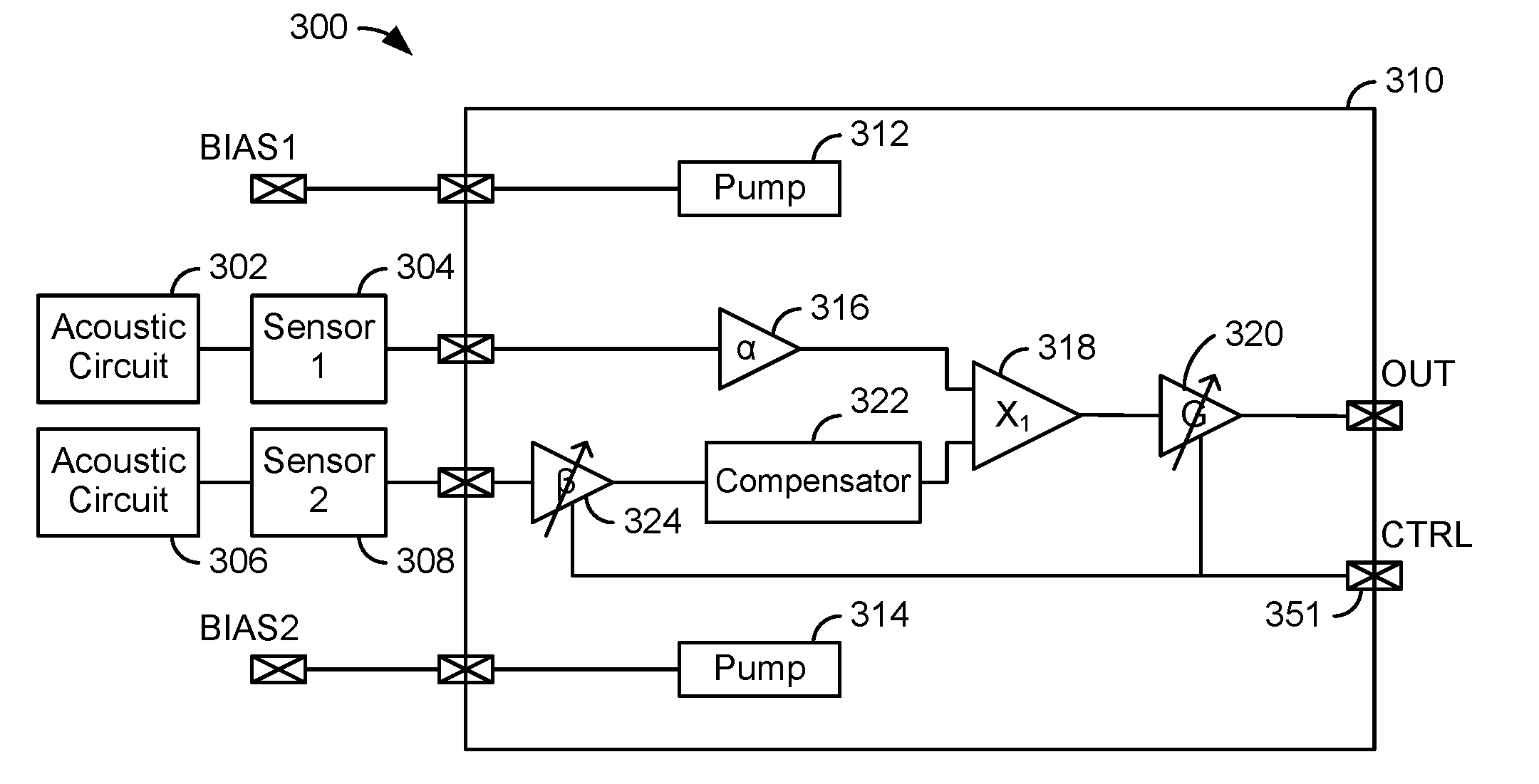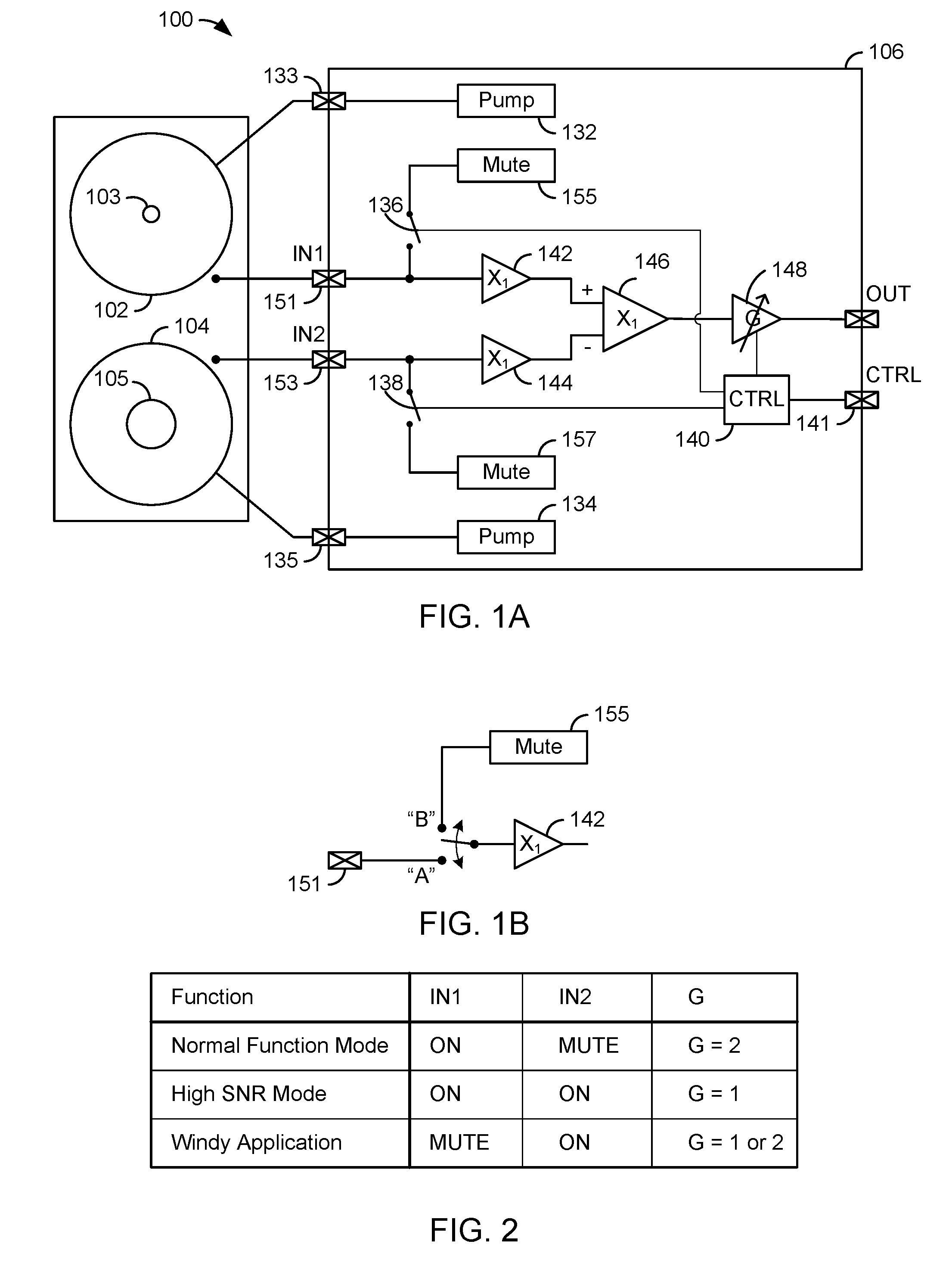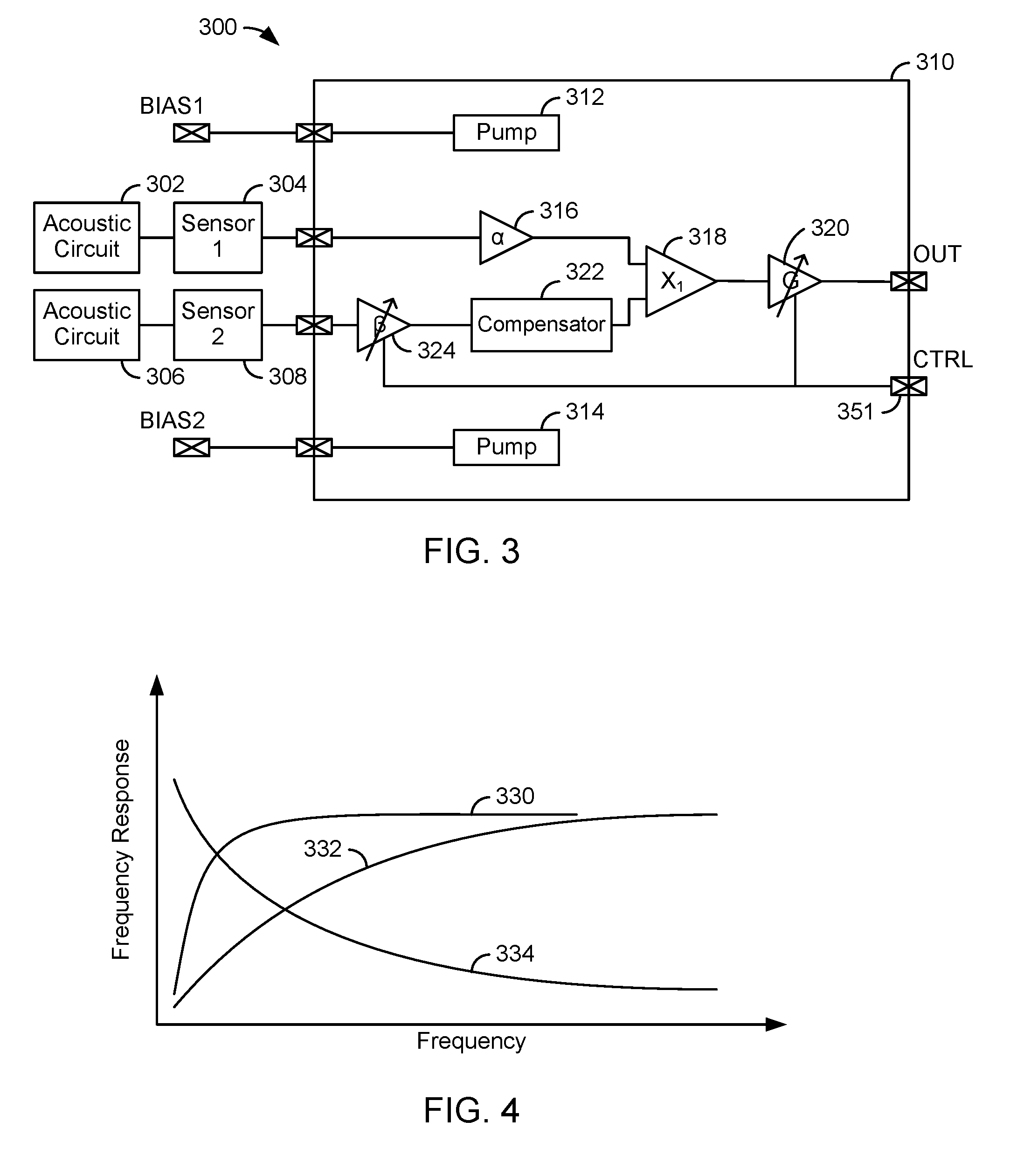Microphone with wind noise resistance
a microphone and wind noise technology, applied in the field of microphones, can solve the problems of wind noise, difficult or impossible for a listener to distinguish the desired voice communication over the wind, and can be a problem in many applications
- Summary
- Abstract
- Description
- Claims
- Application Information
AI Technical Summary
Benefits of technology
Problems solved by technology
Method used
Image
Examples
Embodiment Construction
[0016]The present approaches provide two micro electro mechanical system (MEMS) devices. These are sensor devices that convert sound energy into electrical signals. One or more housings can enclose the sensor devices. The housing can have a port (or hole or opening) that extends through the housing so that sound energy can enter the interior. The sound energy can move the diaphragm and with the back plate create an electrical signal that is representative of the sound energy. The first diaphragm has a first pierce hole, (or opening), with a first size and the second diaphragm with a second pierce hole (or opening) with a second size, with the second size being significantly greater than the first size. A controller looks at energy at particular frequencies. If there is a lot of energy (e.g., energy above a predetermined threshold) at low frequencies, it means that there is wind and then the system is operated with the microphone having the large pierce hole or opening. Otherwise, th...
PUM
 Login to View More
Login to View More Abstract
Description
Claims
Application Information
 Login to View More
Login to View More - R&D
- Intellectual Property
- Life Sciences
- Materials
- Tech Scout
- Unparalleled Data Quality
- Higher Quality Content
- 60% Fewer Hallucinations
Browse by: Latest US Patents, China's latest patents, Technical Efficacy Thesaurus, Application Domain, Technology Topic, Popular Technical Reports.
© 2025 PatSnap. All rights reserved.Legal|Privacy policy|Modern Slavery Act Transparency Statement|Sitemap|About US| Contact US: help@patsnap.com



